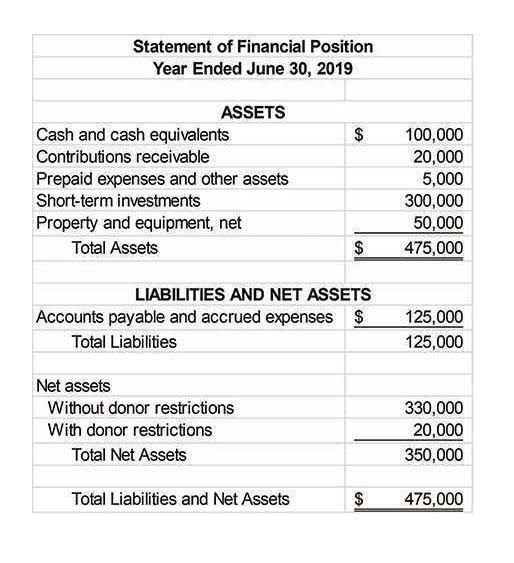
The equity capital/stockholders’ equity can also be viewed as a company’s net assets. You can calculate this by subtracting the total assets from the total liabilities. To compute total liabilities for this equity formula, add the current liabilities such as accounts payable and short-term debts and long-term liabilities such as bonds payable and notes.
- Overall, this article provides readers with a detailed definition of stockholders’ equity along with the most common misconceptions about the value.
- While this figure does include money that could be returned to the owners of the company, it also includes items like depreciation and amortization, which cannot be directly distributed to shareholders.
- For mature companies consistently profitable, the retained earnings line item can contribute the highest percentage of shareholders’ equity.
- The articles and research support materials available on this site are educational and are not intended to be investment or tax advice.
- Understanding and calculating your total equity is fundamental in financial planning and investment strategies, offering a snapshot of financial health and aiding in making informed decisions.
- Often referred to as paid-in capital, the “Common Stock” line item on the balance sheet consists of all contributions made by the company’s equity shareholders.
Common Misconceptions About Stockholders’ Equity

Shareholders Equity is the difference between a company’s assets and liabilities, and represents the remaining https://www.instagram.com/bookstime_inc value if all assets were liquidated and outstanding debt obligations were settled. Shareholders’ equity includes preferred stock, common stock, retained earnings, and accumulated other comprehensive income. This makes sense as the company’s total stockholders’ equity is the cumulative amount of paid-in capital and retained earnings.

Positive vs. Negative Shareholder Equity

In an LBO transaction, a company receives a loan from a private equity firm to fund the acquisition of a division of another company. Cash flows or the assets of the company being acquired usually secure the loan. Mezzanine debt is a private loan, usually provided by a commercial bank or a mezzanine venture capital firm. Mezzanine transactions often involve a mix of debt and equity in a subordinated loan or warrants, common stock, or preferred stock. Equity is used as capital raised by a company, which is then used to purchase assets, invest in projects, and total equity formula fund operations.
What Is Unearned Revenue, And Why Is it Good for Your Business?
- For instance, if a business takes a loan from a bank, the borrowed money will be reflected in its balance sheet as both an increase in the company’s assets and an increase in its loan liability.
- Long-term assets are the value of the capital assets and property such as patents, buildings, equipment and notes receivable.
- Understanding equity and being able to track its growth is crucial to understanding the long-term financial health of a business.
- Long-term liabilities are those that are due for repayment in periods beyond one year and include bonds payable, leases, and pension obligations.
- It helps them to judge the quality of the company’s financial ratios, providing them with the tools to make better investment decisions.
Paid-in capital also referred to as stockholders’ funds, is the amount of money that people have invested in a company. Successful investors look well beyond today’s stock price or this year’s price movement when they consider whether to buy or sell. Debt is a liability, whether it is a long-term loan or a bill that is due to be paid.
What are the Components of Shareholders Equity?
- Equity is used as capital raised by a company, which is then used to purchase assets, invest in projects, and fund operations.
- Many investors view companies with negative shareholder equity as risky or unsafe investments.
- Total Equity (TE) is the value remaining for shareholders after deducting liabilities from assets.
- This is the percentage of net earnings that is not paid to shareholders as dividends.
- Retained earnings are the portion of a company’s profits that isn’t distributed to shareholders.
- The fundamental accounting equation is assets equalling the sum of liabilities and equity.
- This formula works regardless of whether you’re a Fortune 500 company or a one-person show with a side hustle.
Unlike shareholder equity, private equity is not accessible to the average individual. Only “accredited” investors, those with a net worth of at least $1 million, can take part in private equity or venture capital partnerships. For investors who don’t meet this marker, there is the option of private equity exchange-traded funds (ETFs).

What Is Shareholders’ Equity in the Accounting Equation?
In these types of scenarios, the management team’s decision to add more to its cash reserves causes its cash balance to accumulate. Total liabilities are also broken down into current and long-term categories. Current liabilities are debts that are due for repayment within one year such https://www.bookstime.com/articles/public-accounting as accounts payable and tax obligations.
